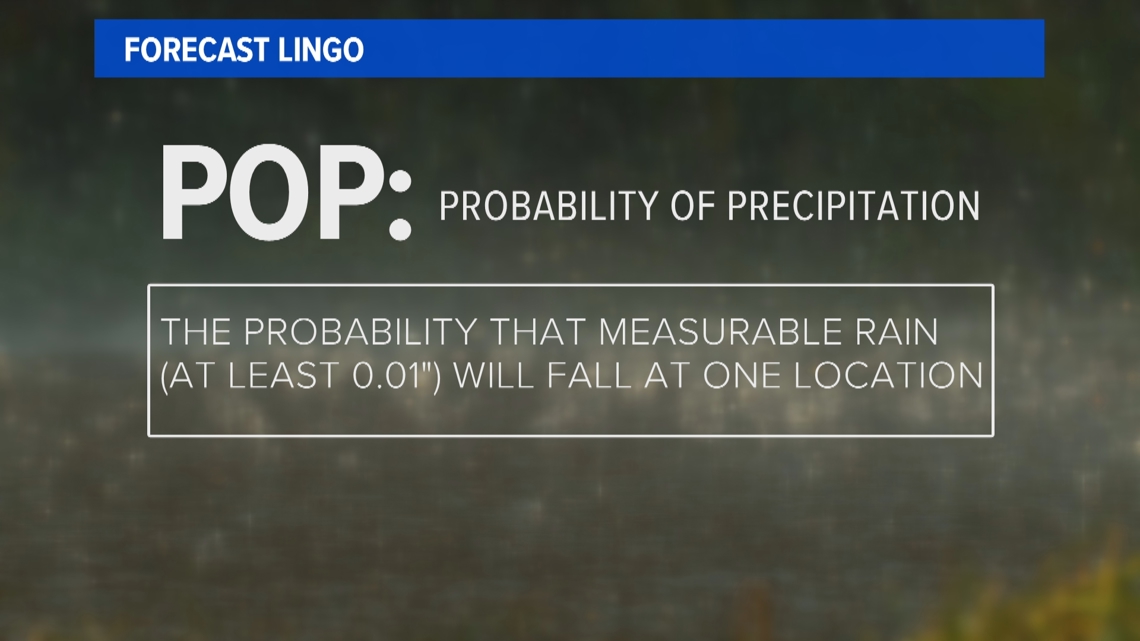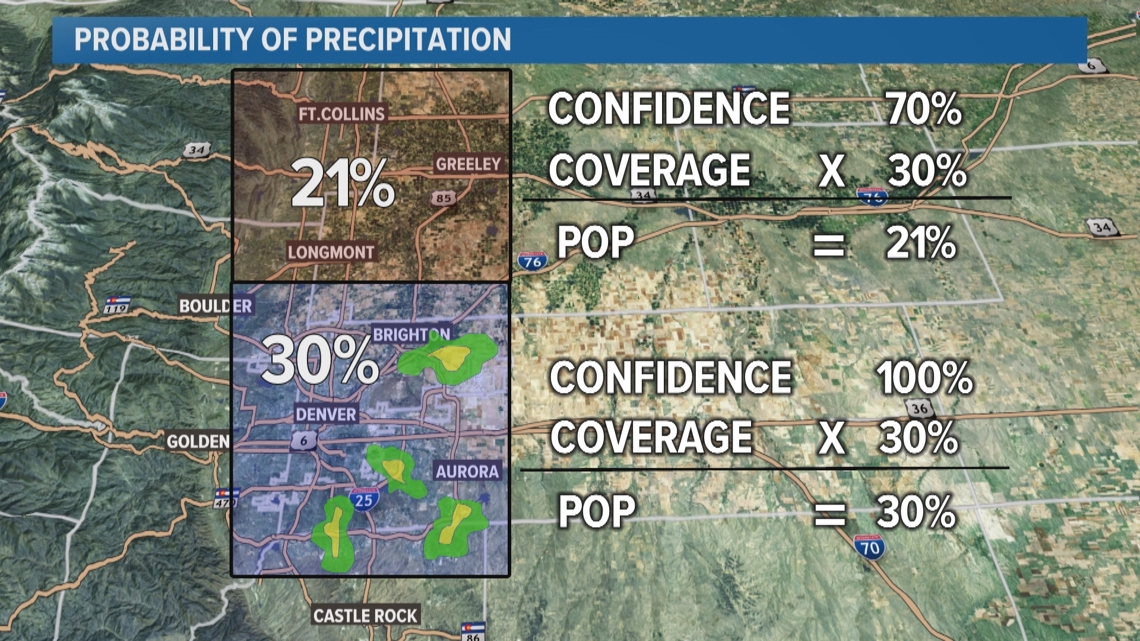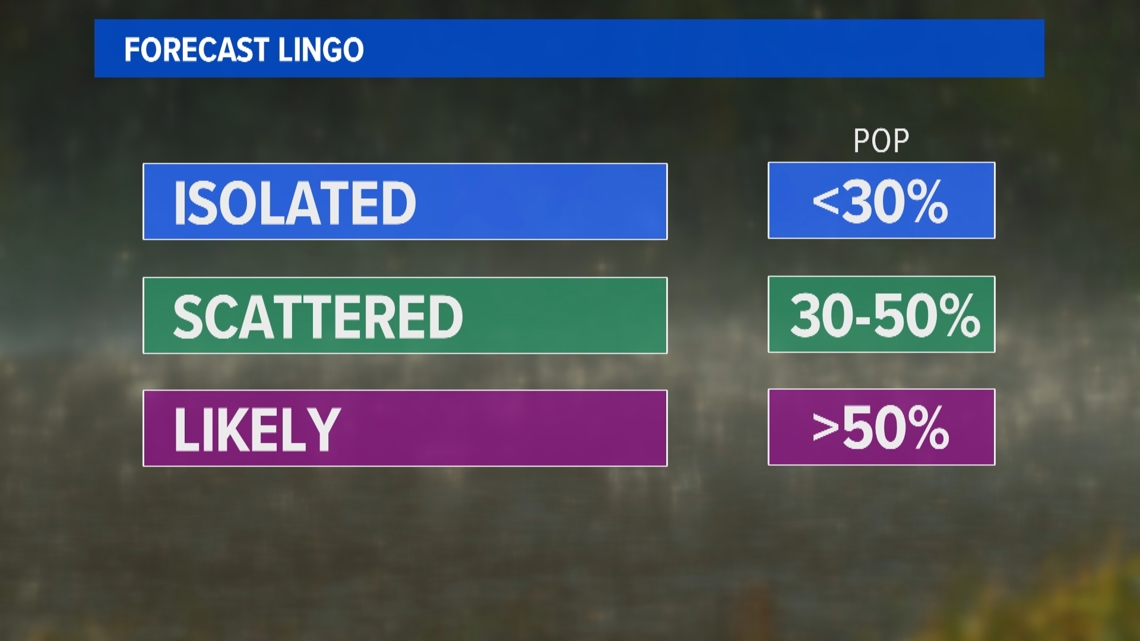DENVER — Thunderstorms look impressive and massive to someone experiencing them, but on a forecasting scale, they are too small to predict the exact location where they will form.
But the ingredients in the atmosphere on a given day do allow meteorologists to give an accurate probability.
They call it the POP – Probability of Precipitation. It’s the probability that measurable rain, which is at least 0.01 inch, will fall at one location.


For instance, Tuesday there was a 30% chance for precipitation, or POP, in Denver. That doesn’t mean there’s a 30% chance that it will rain. It basically means there’s a 30% chance that the rain that falls will fall on you.
It also translates to a coverage area. There was a 30% chance for rain on Tuesday over an area that covered most of the Denver metro. Well, 30% of that area was likely to get measurable rain.
Confidence in rainfall can reduce the POP. For example, the rain on the northern Front Range was also forecast to cover about 30% of the area, but the confidence in storms forming was lower, at just 70%. So that reduces the POP to 21% there.


So, in cases where there was just a 10% chance for rain, and you got rained on, it doesn’t always mean the probability was inaccurate. It might mean that you were in the 10% area that got rain, or in other words, you beat some great odds.
One more way the POP is communicated is with these terms.
For storm chances like Tuesday, under 30%, meteorologists use the term "isolated." Meteorologists use "scattered" for a 30% to 50% chance. For chances above 50%, meteorologists will use the term "likely."


SUGGESTED VIDEOS: Colorado Weather

